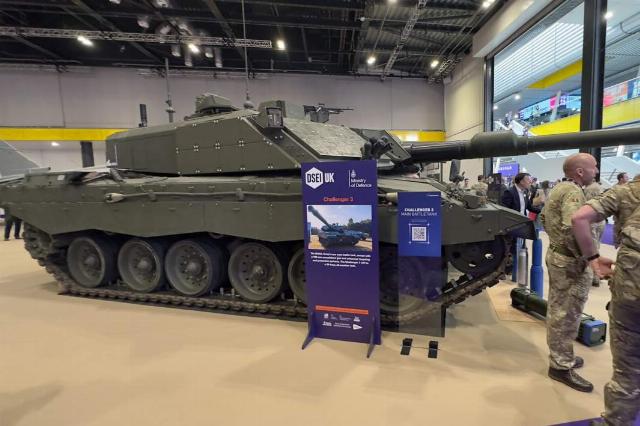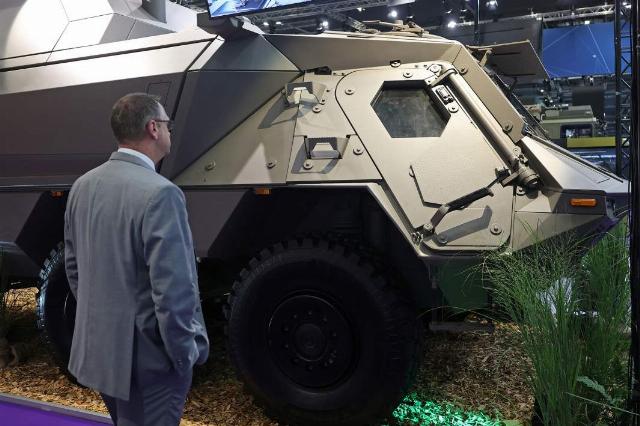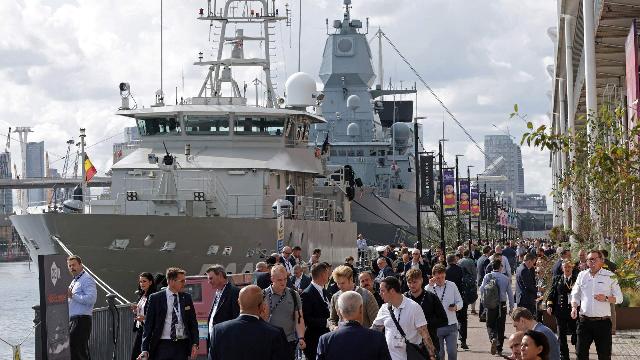The exhibition featured mainly ground-based equipment.
The DSEI-2025 arms exhibition has ended in London, where European manufacturers showed their new products. This year, the main focus was on land technology: in particular, the Challenger 3 tank, new armored personnel carriers, infantry fighting vehicles, ground robots and other systems were presented. What samples have been demonstrated and whether they can have an impact if they appear in service with the Armed Forces of Ukraine and NATO as a whole — in the Izvestia material.
Tanks and armored personnel carriers
The premiere of the DSEI-2025 exhibition was the new British Challenger 3 tank. It will remain the heaviest main tank — 66 tons. In fact, it is an improved Challenger 2 with a modified hull and a new turret. The main gun has changed — now it is not a rifled, but a smoothbore 120 mm L55A1 cannon, unified with the gun of the Leopard 2A6 / 2A7 tank, which makes the vehicles more versatile within the NATO bloc.

Tank Challenger 3
Image Source: Photo: x.com/RoyalArmdCorps
In addition, the new tank should receive an active protection complex (KAZ) Trophy, but a sample without it is presented at the exhibition. A remote-controlled combat module with a machine gun should also appear on the tower. The problem with the Challenger 3 is that it will obviously be expensive, and it will be released in a very small series — 148 units are planned so far, which will complement the Challenger 2 in the British armed forces. From the point of view of the development of tank technology, the sample is interesting in its own way, but, like the Challenger 2, it will not affect the course of real combat operations if it enters service.
The exhibition featured many new models of ground-based armored and not so much equipment: tanks, infantry fighting vehicles, armored personnel carriers, and other combat vehicles. It became a kind of benefit for the German concern Rheinmetall, which, together with the American Lockheed Martin, showed the Fuchs JAGM, a demonstration mobile launcher on the Fuchs APC chassis. This is the first prototype with AGM-179 Joint Air-to-Ground Missile (JAGM) missiles.
A vertical sea launch launcher for 24 JAGM missiles, as well as for AGM-114L Hellfire Longbow missiles, is built into the body of the APC. The complex can fire at any target, from ships to firing points. It provides a high rate of fire and the ability to use multi-mode JAGM missiles. The range is up to 16 km.

Fuchs JAGM
Image source: Photo: REUTERS/Toby Melville
The closest analogue is the Russian Chrysanthemum complex, but in the case of the Rheinmetall sample, no reloading is required for firing. That is, 24 high-precision missile shots can be fired in two to three minutes. On the one hand, these are quite serious opportunities, but the question is whether such a lightly armored installation will survive in modern combat conditions, where it can be destroyed by a single anti-tank missile or an FPV drone.
Robotic systems
Another German company, ARX Robotics, introduced the Combat Gereon ground—based robotic system. It is a tracked combat robot armed with a remote-controlled LOKI combat module from Valhalla Turrets with a heavy machine gun. Basically, it's a fairly simple solution with a mobile platform and a remotely controlled firing point with different sensors.
The peculiarity of the new product is that it is planned to be produced jointly with Ukrainian enterprises, which means that it may appear in service with the Armed Forces of Ukraine. The main tasks are reconnaissance, suppression fire, support during assaults, mine clearance and surveillance in combat zones with high risk to personnel. However, the device does not have specific armor protection, and it can be easily detected and destroyed by electronic intelligence and electronic warfare.

Trackx Armored Personnel carrier
Image Source: Photo: x.com/Patria Group
Finnish Patria has revealed a new Trackx tracked armored personnel carrier, which is probably inspired by the Soviet MT-LB universal transporter. The Finns are trying to create a universal platform to replace the massive M113 APC, on the basis of which both an armored personnel carrier and specialized combat vehicles will be built. In this configuration, the vehicle takes on board two crew members and ten paratroopers. The maximum weight of the APC is 15.5 tons.
Serial production is scheduled to begin in 2027, and Trackx will be exported immediately, including to the Armed Forces of Ukraine. This is the firstborn of the FAMOUS program funded by the European Union for the development of armored vehicles of the future, in which Patria is the coordinating company.
But here again the question arises of the security of such vehicles — bulletproof booking is unlikely to protect future motorized riflemen even from FPV drones. Such APCs will not be able to compete with other ATGM—type strike systems (ground-based or aviation-based) - they are unlikely to become a problem for the Russian army.
The Condor Project
Image Source: Photo: gettyimages.com/Leon Neal/Staff
Another project was presented by the German company FFG — the transformation of the Leopard 1 tank into a mobile artillery installation with an uninhabited combat module equipped with a 30-millimeter rapid-firing cannon. The project is specifically proposed to countries where Leopard 1 is in service. Instead of scrapping obsolete tanks, you can give them a second life by equipping them with a universal artillery system. The car got the sonorous name "Condor", and in general the project looks like a beautiful marketing ploy. But it may turn out that someone will fall for it, and the Condors can be seen in action.
In general, dozens of samples of equipment from various manufacturers are shown at the exhibition. There are a lot of startups that have sensed a lot of money from the accelerating arms race in the West. This is a good time to knock out additional budgets, which is what the European military-industrial complex is doing.
Dmitry Kornev


